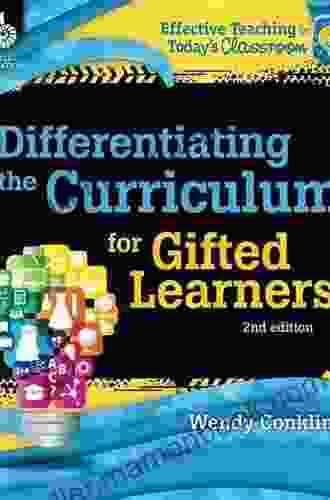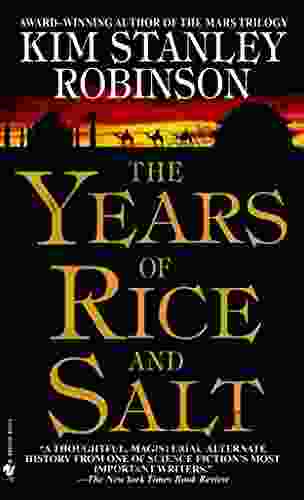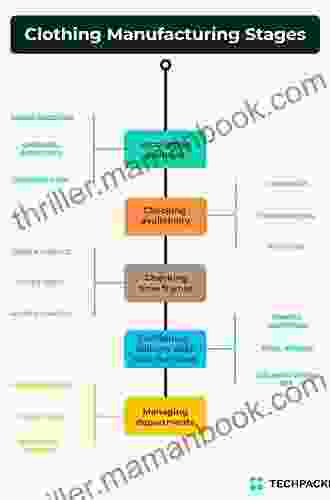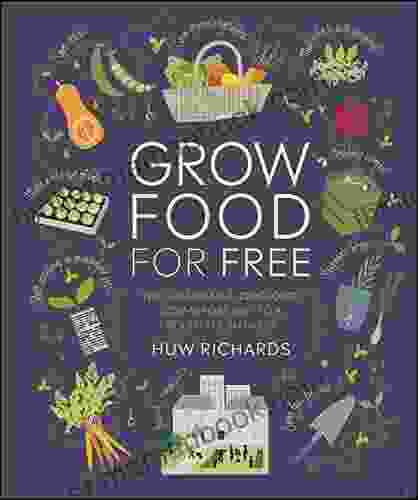Grow Your Own Food for Free: A Comprehensive Guide to Sustainable Living

Growing your own food can be an incredibly rewarding experience, providing you with fresh, organic produce at a fraction of the cost. Not only is it a great way to save money, but it is also an excellent way to connect with nature, reduce your carbon footprint, and live a more sustainable lifestyle.
4.7 out of 5
| Language | : | English |
| File size | : | 305624 KB |
| Text-to-Speech | : | Enabled |
| Enhanced typesetting | : | Enabled |
| Print length | : | 631 pages |
| Screen Reader | : | Supported |
While the idea of growing your own food may seem daunting, it is entirely possible to do so for free. By utilizing resources such as local community gardens,を活用するリソースなど、地域コミュニティガーデンを活用する、implementing sustainable gardening practices, and utilizing vertical gardening techniques, you can enjoy the benefits of fresh, homegrown produce without breaking the bank.
Creating Raised Beds
Raised beds are an excellent way to grow a variety of vegetables, fruits, and herbs in a small space. They are also a great option for those with limited gardening experience or who have poor soil quality.
To create a raised bed, you will need the following:
- Untreated lumber (such as cedar or redwood)
- Soil
- Compost
- Mulch
Once you have gathered your materials, you can follow these steps to create your raised bed:
- Determine the size and location of your raised bed. The ideal size for a raised bed is 4 feet wide by 8 feet long and 12 to 18 inches deep.
- Cut the lumber to the desired length and assemble the frame of the raised bed using screws or nails.
- Line the bottom of the raised bed with a layer of cardboard or newspaper to suppress weeds.
- Fill the raised bed with a mixture of soil and compost. The ideal ratio is 50% soil to 50% compost.
- Water the soil deeply and let it settle for a few days before planting.
- Spread a layer of mulch around the plants to help retain moisture and suppress weeds.
Vertical Gardening
Vertical gardening is a great way to grow a lot of food in a small space. This technique is ideal for those living in apartments or with limited outdoor space.
There are many different ways to implement vertical gardening, including:
- Hanging baskets
- Trellises
- Hanging planters
- Wall-mounted planters
To get started with vertical gardening, you will need to choose the right plants. Some good plants for vertical gardening include:
- Tomatoes
- Cucumbers
- Beans
- Peppers
- Strawberries
Once you have chosen your plants, you can follow these steps to implement vertical gardening:
- Choose a sunny spot for your vertical garden.
- Install your chosen vertical gardening system.
- Fill the containers with soil and compost.
- Plant your seedlings or transplants.
- Water your plants regularly and fertilize them as needed.
Sustainable Gardening Practices
Sustainable gardening practices are essential for growing your own food for free. These practices help to reduce your environmental impact and ensure that your garden is healthy and productive for years to come.
Some sustainable gardening practices include:
- Composting
- Mulching
- Crop rotation
- Natural pest control
- Water conservation
By implementing sustainable gardening practices, you can create a thriving garden that provides you with fresh, organic produce for years to come.
Composting
Composting is the process of breaking down organic matter, such as food scraps, yard waste, and paper products, into a nutrient-rich soil amendment.
Composting is a great way to reduce your waste and improve the soil in your garden. It also helps to reduce methane emissions, which is a potent greenhouse gas.
There are many different ways to compost, but the most common method is to build a compost pile. To build a compost pile, you will need to gather a variety of organic materials, such as:
- Food scraps
- Yard waste
- Paper products
Once you have gathered your materials, you can follow these steps to build a compost pile:
- Choose a location for your compost pile that is in a shady spot and has good drainage.
- Create a pile of organic materials, alternating between layers of "browns" (such as dry leaves and paper) and layers of "greens" (such as food scraps and grass clippings).
- Water the pile regularly and turn it every few weeks to aerate it.
- After a few months, your compost will be ready to use. It should be a dark, crumbly material that has a sweet smell.
Mulching
Mulching is the process of covering the soil around your plants with a layer of organic material, such as straw, hay, or wood chips.
Mulching has many benefits, including:
- Suppressing weeds
- Retaining moisture
- Regulating soil temperature
- Adding nutrients to the soil
To mulch your garden, simply spread a layer of organic material around your plants, being careful not to cover the stems.
Crop Rotation
Crop rotation is the practice of growing different types of plants in the same area over a period of years.
Crop rotation is important for several reasons, including:
- Preventing soil-borne diseases
- Improving soil fertility
- Reducing
4.7 out of 5
| Language | : | English |
| File size | : | 305624 KB |
| Text-to-Speech | : | Enabled |
| Enhanced typesetting | : | Enabled |
| Print length | : | 631 pages |
| Screen Reader | : | Supported |
Do you want to contribute by writing guest posts on this blog?
Please contact us and send us a resume of previous articles that you have written.
 Top Book
Top Book Novel
Novel Fiction
Fiction Nonfiction
Nonfiction Literature
Literature Paperback
Paperback Hardcover
Hardcover E-book
E-book Audiobook
Audiobook Bestseller
Bestseller Classic
Classic Mystery
Mystery Thriller
Thriller Romance
Romance Fantasy
Fantasy Science Fiction
Science Fiction Biography
Biography Memoir
Memoir Autobiography
Autobiography Poetry
Poetry Drama
Drama Historical Fiction
Historical Fiction Self-help
Self-help Young Adult
Young Adult Childrens Books
Childrens Books Graphic Novel
Graphic Novel Anthology
Anthology Series
Series Encyclopedia
Encyclopedia Reference
Reference Guidebook
Guidebook Textbook
Textbook Workbook
Workbook Journal
Journal Diary
Diary Manuscript
Manuscript Folio
Folio Pulp Fiction
Pulp Fiction Short Stories
Short Stories Fairy Tales
Fairy Tales Fables
Fables Mythology
Mythology Philosophy
Philosophy Religion
Religion Spirituality
Spirituality Essays
Essays Critique
Critique Commentary
Commentary Glossary
Glossary Bibliography
Bibliography Index
Index Table of Contents
Table of Contents Preface
Preface Introduction
Introduction Foreword
Foreword Afterword
Afterword Appendices
Appendices Annotations
Annotations Footnotes
Footnotes Epilogue
Epilogue Prologue
Prologue Warren Lee Cohen
Warren Lee Cohen Don Hossler
Don Hossler Cheryl Strayed
Cheryl Strayed Kei Sasuga
Kei Sasuga Julia Buckley
Julia Buckley Steven Johnson
Steven Johnson Peter Gizzi
Peter Gizzi L J Shen
L J Shen Thomas Abbott
Thomas Abbott Annette Libeskind Berkovits
Annette Libeskind Berkovits Kathryn Meyer Griffith
Kathryn Meyer Griffith Michael Drayton
Michael Drayton The Brothers Rodemeyer
The Brothers Rodemeyer Elvira Souza Lima
Elvira Souza Lima Eric Lorenzen
Eric Lorenzen Anne O Brien
Anne O Brien Barbara T Mates
Barbara T Mates Camille Fournier
Camille Fournier Clay Risen
Clay Risen Brenda Long
Brenda Long
Light bulbAdvertise smarter! Our strategic ad space ensures maximum exposure. Reserve your spot today!

 Robbie CarterStreams of Grace Flowing Through Spirit Inspired Poetry: A Journey of Divine...
Robbie CarterStreams of Grace Flowing Through Spirit Inspired Poetry: A Journey of Divine...
 Cade SimmonsHeracles and Other Plays: A Journey into the Timeless Legacy of Greek Tragedy
Cade SimmonsHeracles and Other Plays: A Journey into the Timeless Legacy of Greek Tragedy Allen GinsbergFollow ·8.3k
Allen GinsbergFollow ·8.3k Diego BlairFollow ·13.9k
Diego BlairFollow ·13.9k Theo CoxFollow ·2.3k
Theo CoxFollow ·2.3k E.M. ForsterFollow ·18.3k
E.M. ForsterFollow ·18.3k Milton BellFollow ·10.5k
Milton BellFollow ·10.5k Jared PowellFollow ·4.7k
Jared PowellFollow ·4.7k Cormac McCarthyFollow ·16.8k
Cormac McCarthyFollow ·16.8k Aleksandr PushkinFollow ·15.8k
Aleksandr PushkinFollow ·15.8k

 Caleb Carter
Caleb CarterThe Complete Beagle Dog Beginners Guide: Beagle Facts,...
Beagles are...

 Gage Hayes
Gage HayesThe Origins and Evolution of No Child Left Behind:...
The No Child Left Behind...

 George Martin
George MartinThe Love Pirates: A Swashbuckling Tale of Love,...
The Love Pirates is a thrilling...

 Nathaniel Hawthorne
Nathaniel HawthorneDifferentiating the Curriculum for Gifted Learners:...
Gifted learners are...

 Carlos Fuentes
Carlos FuentesThe Years of Rice and Salt: A Journey Through a Forgotten...
The Years of Rice and Salt is...

 Herbert Cox
Herbert CoxThe Intricate Design of Clothing Manufacturing Processes:...
The clothing industry is a vast and...
4.7 out of 5
| Language | : | English |
| File size | : | 305624 KB |
| Text-to-Speech | : | Enabled |
| Enhanced typesetting | : | Enabled |
| Print length | : | 631 pages |
| Screen Reader | : | Supported |








